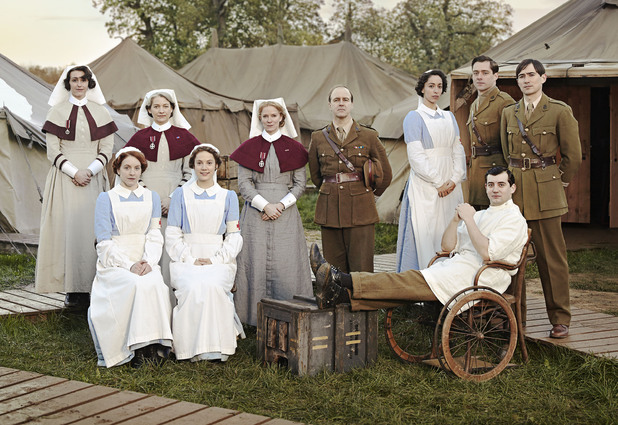Thanks to BBC1’s new World War One drama The Crimson Field, I know now how to fake the symptoms of syphilis. All you need is a red hot needle, to create a genital blister, and some condensed milk, for realistic-looking discharge.
You had to do this if you wanted to get sent home from the front, because the horrible public school officers didn’t believe in namby-pamby mental illnesses like shell-shock, and had absolutely no sympathy for the poor privates who wept when they listened to Madame Butterfly.
Is it possible to make a WWI drama without resorting to cliché? Yes, actually: the BBC’s adaptation of Parade’s End managed it a couple of years ago.
Still, they at least had a book to go on. Something makes me doubt Sarah Phelps, who churned out the script for this new six-parter set in a field hospital in Boulogne, did much research beyond Wikipedia.
At the risk of sounding like Peter Hitchens deconstructing Downton, the accents were too modern, the script was anachronistic (would a young woman in 1915 have muttered ‘God!’ in an irritated way?) and there was a noticeable lack of military language.
More importantly, there was not nearly enough gore or suffering. Even the piled-up, bloody bandages were a uniform bubblegum-pink. Ok, there were a few chopped-off toes (though by the time the nurse found them they wouldn’t have been skin-colour, like a joke-shop finger), but we could have done with a great deal more blood, pus, urine, phlegm, bile, crying and swearing.
Still, Call the Midwife, this drama’s illustrious predecessor in the Sunday night nine o’clock slot, was remarkably free of poo, placenta and that white goo babies are covered in when they’re born.
Yes, those of you in mourning after the end of Call the Midwife can cast off your funeral garb and rejoice, because The Crimson Field is — give or take a few minor details — pretty much exactly the same.
Not only is it sanitised, sepia-tinged and overly sentimental, it has identical characters. On the one hand you’ve got the young women volunteers, including a prissy spinster who’s found her calling in life, a rebellious one who smokes and wears scent (but will no doubt turn out to be a virgin), and a haughty one with a mysterious past who talks back to matron and says things like ‘I didn’t come here to make friends.’ She’s played, rather well, by Oona Chaplin (who, poor thing, cannot be mentioned without pointing out that she is Charlie’s granddaughter and Eugene O’Neil’s great-granddaughter).
Then there are the older, wiser women. The ferocious matron who’ll turn out to have a surprisingly soft heart, played by Hermione Norris, and the possibly bulimic Sister Quayle, played by an actress who’s the spitting image of Charlotte Rampling. They carry the show, as they’re supposed to. Towards the end of episode one, Suranne Jones turns up, to Matron’s delight. She’s got short hair and drives a motorbike, so I naturally assumed she was going to have an affair with Matron, but then the last scene showed her fingering a secret wedding ring so maybe not.
The men are incidental to the action, just as they are in Call the Midwife. The lieutenant colonel in charge of the field hospital is played by Kevin Doyle, who you may recognise as the hapless servant Molesley from Downton Abbey, which just about sums it up.
This is a drama cynically manufactured to appeal to women; well, a certain type of woman who prefers chocolate to sex and is past her first flush of youth. It is saccharine, shallow and desperately short of intelligence and authenticity. Saying that, it’s pretty watchable and I’ll probably catch episode two.






Comments